KUALA LUMPUR — In "Running Off", a 2020 painting by former pressman turned artist Lim Siang Jin, the viewer detects a buoyancy and unassuming ache for life.
The colours could have come from a children’s picture book yet the peppering of eyes here and there can be forbidding too, almost sinister.
Such dichotomy isn’t strange when you consider how the 69-year-old has often straddled two worlds, and is now bringing both of them together in his inaugural exhibition, Restart 2020: Continuation and Change (also the title of Lim’s first series), at A Place Where by APW, formerly a printing factory in Bangsar.
The exhibition, which will run from October 21-30, juxtaposes his former life as a professional in the media and publishing industry as well as his long-hidden love for art.
First, a little background: Lim pursued his Bachelor in Sociology at University of Kent in 1973 for three years, followed by another year at University of Leeds for his Master in Sociology and Culture.
His education and innate sense of seeking connections would later not only shape his career as a presssman but also his art.
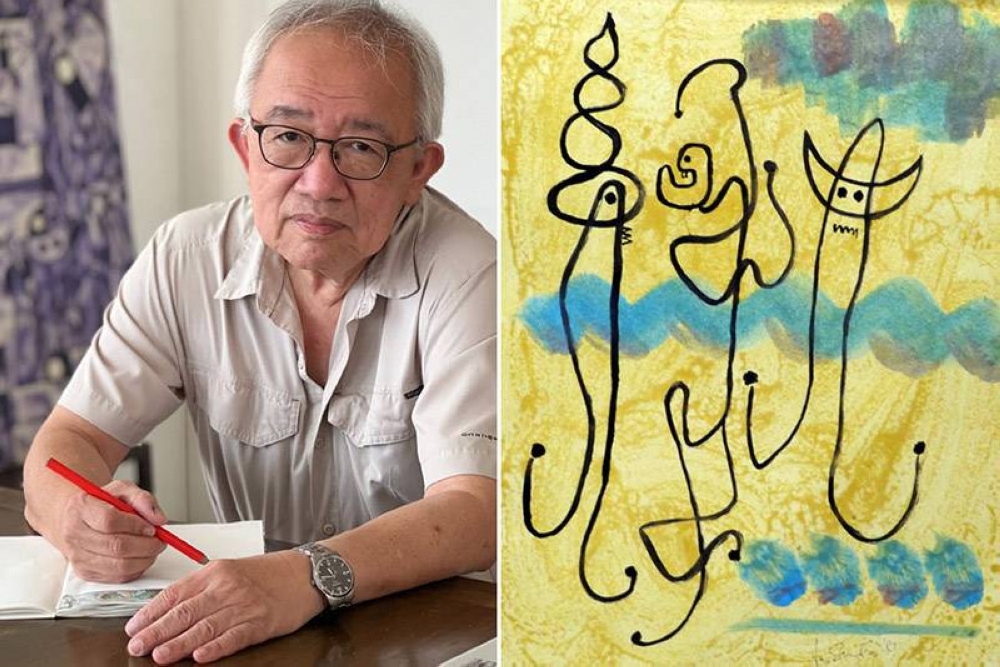
Lim joined The Malay Mail in 1978; it was his first job which launched an impressive résumé that includes the Head of Publications at the Institute of Strategic and International Studies Malaysia (1985-1991) as well as founder director of The Edge.
Unknown to most of his colleagues, Lim was actually actively painting between the mid-1970s and late 1980s. After that, real life commitments — work and raising a family — got in the way and his art was left on the back burner for the last 30 years.
But it was never far from his mind, as he shares: "I have been trying to start, publishing old pieces as PDFs in 2016 and 2018. But there was no impetus, nothing to truly push me. There was inertia due to the need to put so many things together in the proper manner.”
The desire to restart was always there, but not the circumstances. Then the Covid-19 pandemic happened and Lim suddenly found himself with a lot of free time.
He says, "I asked myself, Why don’t I start painting again? I began rummaging through all my stuff. I found one piece titled 'Trial Painting Twelve, 1981' in a notebook that somehow moved me. That was the basis for my restart.”
The three decades that had passed since Lim’s first creative period, during which he underwent a multitude of life experiences — "I went through a lot of changes in my career, doing my own thing, my children growing up” — ultimately informed his current approach to art.
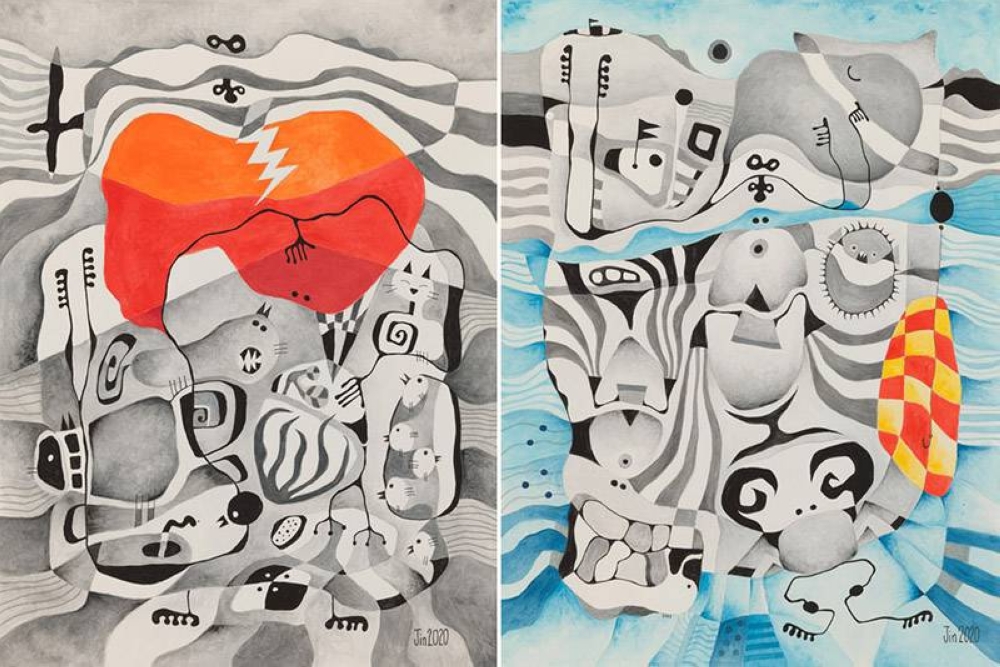
He says, "I became more methodical, no more flash-in-the-pan pieces. I don’t paint in a single style. That is how I view art, view life. Everything is a project; after one, I will move to another. Each project is connected... if you look carefully.”
Take his Unconnected series: pieces such as "Shelter From The Storm” and "Fishing” offer a window into how interwoven structures such as animals and pot-bellied people can comfort and delight the viewers, including, he reveals, his own grandchildren.
In stark contrast to the neutral colours and and emotionally-pleasing shapes of the Unconnected series is the harsher, colder monochromatic palette of his Back to Black series.
He explains, "During Covid-19, I didn’t want to fall into negativity. I could have painted people in agony, for instance. I decided not to dwell on that but to paint something nice and whimsical.”
Yet when dark thoughts arose, Lim found himself sketching some "black doodles” as he honestly puts it.
He recalls, "It was too powerful for me to handle. I could stop or I could go into a medium that gives me a respite from colour. That’s what made me switch to black for this series. It’s not that I wanted to abandon colour, I was just curious about what is produced in the end.”
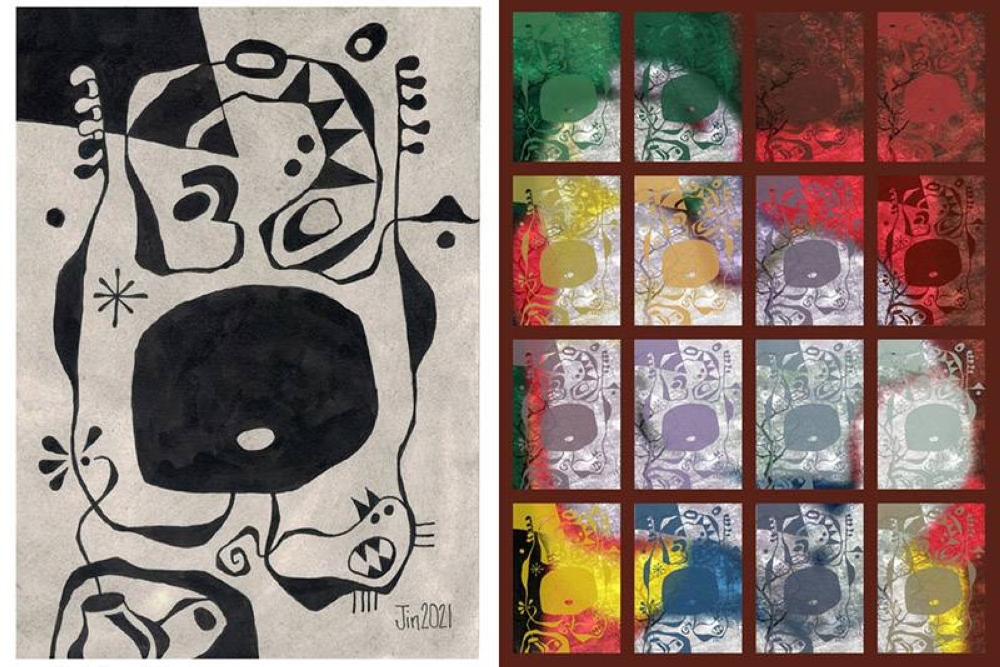
Case-in-point: His "dark doodles” from the Back to Black series are repurposed for another project, a digital-analogue experiment.
Here, the black-and-white small rectangular doodles are amalgamated with photographs of rain tree canopies and the colours from classic paintings by the masters.
For instance, the vivid yellows, reds and greens of Pablo Picasso's "The Dream” might form the backdrop of a new Warhol-like piece, the branches of the rain trees twisting like shadows and his black doodles repeating over and over.
This love of patterns and production is part of Lim’s nature and his former career. He says, "When I was in the press, I was mainly in the backroom and management. This exhibition, it’s about connecting that production experience with art and my love of photography.”
Warhol, Lim wryly notes, was involved in production too. He adds, "You know, not really just painting. He was doing an amalgamation of different production methods such as silkscreens. In this age, I thought I ought to explore both the digital and the analogue.”
Lim tells me that both his art and his work are influenced by the ideas of Quality, Timing and Aufhebung; the latter a central concept of the German philosopher G. W. F. Hegel that expresses a duality.
That every new development is an inseparable blend of the old and the new. For Lim, Aufhebung is about movement and change.
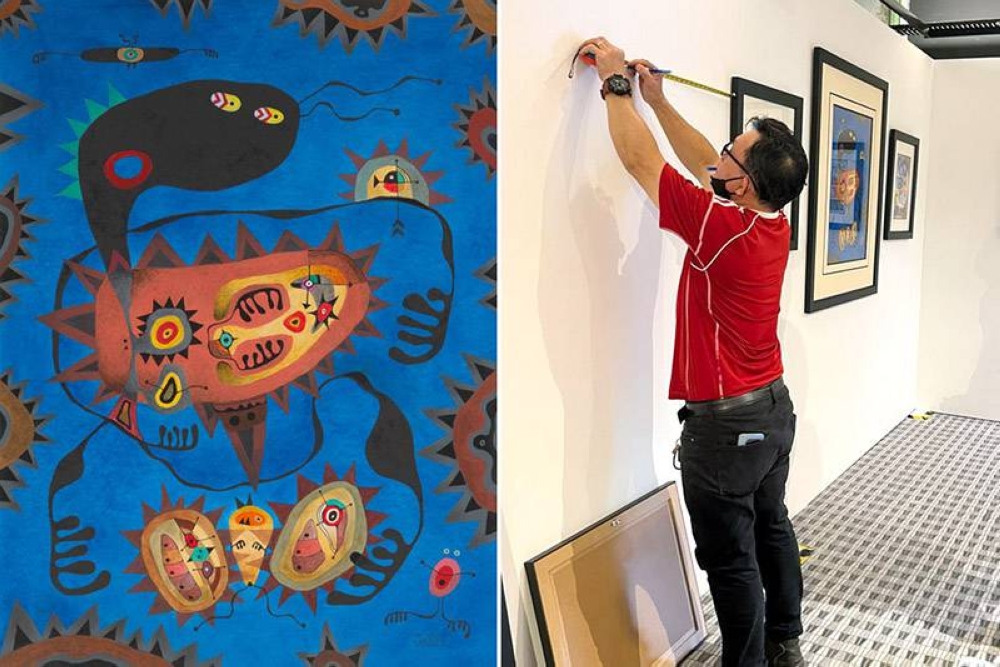
He shares, "As you move and change, whatever is in your past comes into your present. Say you are working on something purely in the digital. After a while, you find you are bringing the analogue back into it. It’s natural.”
A painter might say, "I only paint” and a sculptor "I only sculpt.” But for Lim this is a false choice: "To be forward looking today, you have to look at the digital too. Now, don’t get me wrong, this isn’t a criticism of others. But too many artists stay solely in either realm.”
He explains that if more contemporary artists would explore the space between analogue and digital, they will find tremendous creative energy within that sphere.
Why stay in one or the other, when you can traverse them both?
I am reminded of this third choice as I absorb pieces from Lim’s Evocative Durian, Mystifying Durian series, such as "Bickering Over Durian”, "Keep Off” and "The Gaze among Thorny Distractions.”
Having always to illustrate the "king of fruit”, Lim was inspired in early 2022 by a documentary on durians to showcase his feelings about the fruit in wild and vibrant anthropomorphic forms and colours.
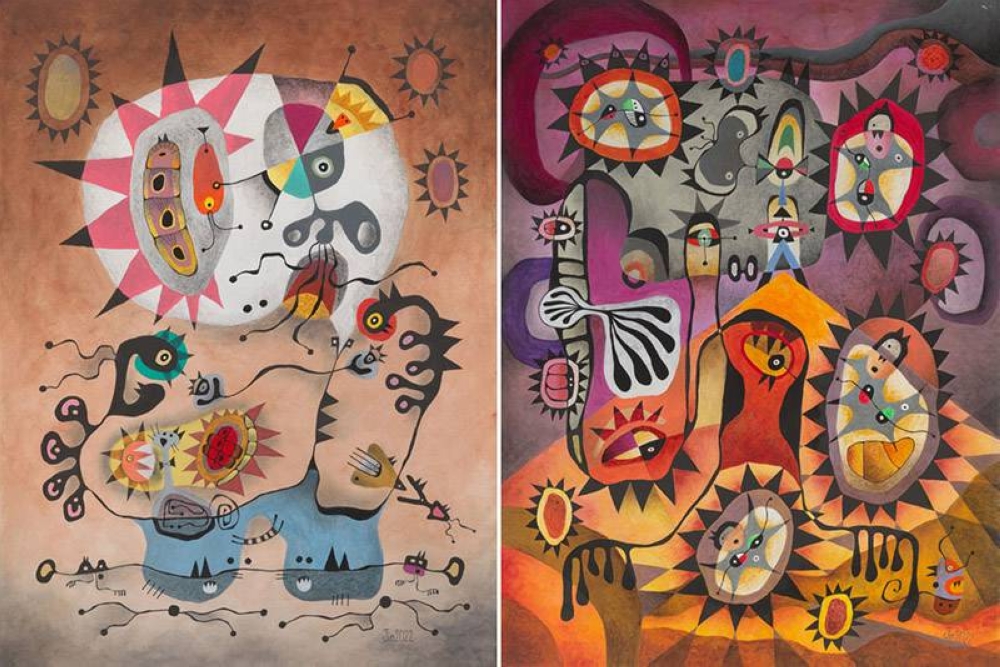
Lim would later transform these pieces, originally painted with acrylic, ink and pencil on paper, into two sets of limited "miniature archival pigment prints” (MAPPs). These were photographed and given some treatment on Adobe Photoshop.
Why stay in one realm or the other, when you can traverse them both?
Speaking with Lim, one thing that struck me the most is how gentle he is, in manner and in outlook. Perhaps that explains his slow but steady approach to life and art.
In this, he is both an artist and a gentleman — and this, visitors to the exhibition, might detect in his paintings if they look closely.
These are the works of someone who refuses to stay in a single realm when he can travel curiously in between.
Restart 2020: Continuation & Change, Biographical Expressions by Lim Siang Jin
Dates: 21-30 October
Venue: A Place Where by APW, 29, Jalan Riong, Bangsar
To read more about Lim Siang Jin’s art and other biographical expressions, please visit limsiangjin.art.






















